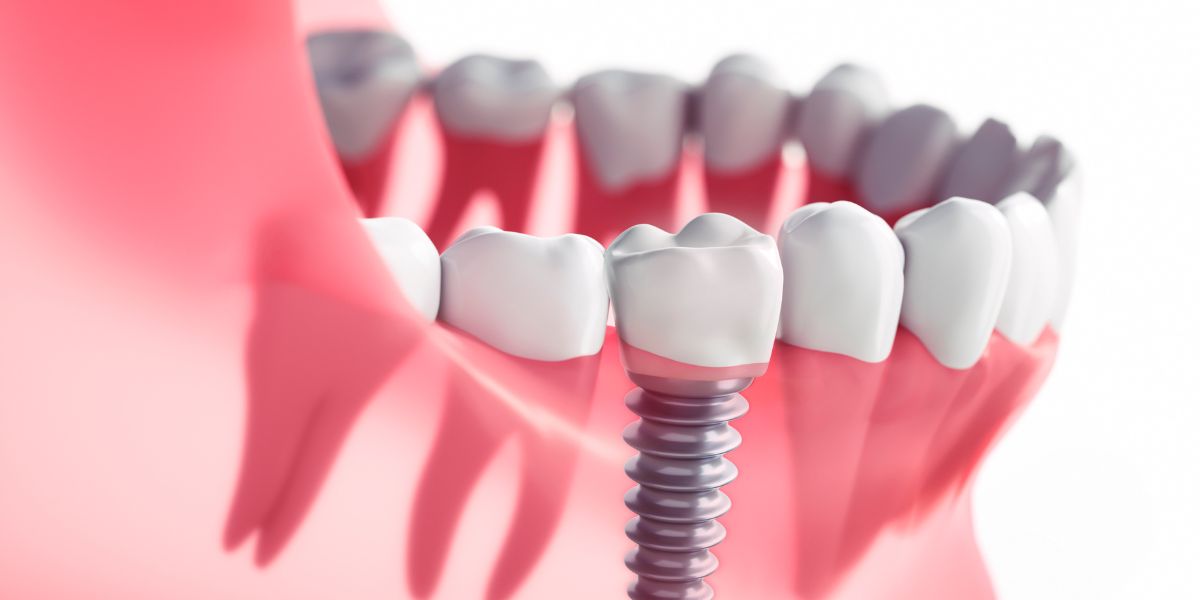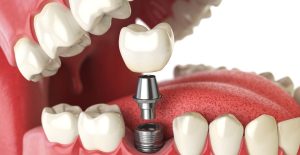Unlocking the Secrets of Dental Implants: Discover the Best Type and Procedure for Your Perfect Smile
When you’re at a party or a dinner, and you suddenly realize that missing or damaged teeth are making it harder to smile confidently. It’s frustrating, isn’t it? The good news is dental implants are here to change that! Whether you’ve lost a tooth due to injury, decay, or age, dental implants offer a natural-looking, long-lasting solution that can restore your smile to its full potential.
In this blog, we’ll walk you through everything you need to know about dental implants: the types available, the procedure itself, and why they’re becoming the go-to solution for so many people looking to reclaim their perfect smile.
Let’s dive into the world of dental implants and unlock the secrets to a beautiful, functional smile!
Before we explore the different types, let’s start with the basics. A dental implant is a small titanium post that is surgically inserted into your jawbone, acting as a new "root" for a missing tooth. Once the implant integrates with your bone (a process called osseointegration), a custom-made crown is placed on top to restore the look, feel, and function of your natural tooth.

What makes dental implants such a game-changer is how they mimic your natural teeth. Unlike dentures that sit on top of your gums, dental implants become a permanent part of your mouth, providing a secure, comfortable, and aesthetically pleasing solution for missing teeth.
Not all dental implants are created equal. Depending on your needs, there are different types of implants that may work better for you. Let’s explore the three most common types of dental implants:
When people think of dental implants, they’re often referring to endosteal implants. These are the most common type and are placed directly into the jawbone during a surgical procedure. Made from durable titanium, endosteal implants fuse with the bone over time, ensuring a strong and lasting bond.
Once the implant has fully integrated with your jawbone, a crown is placed on top, providing a seamless restoration that looks and feels just like a natural tooth.
Endosteal implants are ideal for patients who have a healthy jawbone and are looking to replace single or multiple teeth.
If you’ve experienced significant bone loss in your jaw, subperiosteal implants might be the solution for you. Unlike endosteal implants, which are placed directly into the jawbone, subperiosteal implants are placed under the gum tissue, but on top of the jawbone.
These implants are designed for patients who don’t have enough healthy bone to support traditional implants. A custom-made metal frame is placed on the jawbone, and over time, your gums heal around the frame, securing the implant in place. Posts are then attached to the frame to hold the artificial teeth.
For patients with significant upper jawbone loss who don’t want to undergo bone grafting, zygomatic implants are a game-changer. Rather than being placed into the jawbone, zygomatic implants are anchored into the cheekbone (zygomatic bone).
This type of implant is less common but provides a solution for those who have very little bone in their upper jaw. Since it’s anchored in a different area, zygomatic implants eliminate the need for bone grafting procedures, making it a great option for those with complex dental situations.
If you’re thinking about getting dental implants, it’s natural to have questions about the process. The procedure involves several steps, but don’t worry ,we’ll guide you through each stage!
Before any procedure, you’ll meet with your dentist or oral surgeon to discuss your dental health. During this consultation, they’ll examine your gums, jawbone, and overall oral health. They may take X-rays or 3D scans to get a detailed view of your mouth and help plan the best course of action.
This is also the time to discuss your goals and any concerns you may have about the procedure.
Once your treatment plan is set, the next step is the surgical placement of the dental implant. This is typically done under local anesthesia, so you won’t feel any pain during the procedure. The dentist will create a small incision in the gum to access the jawbone and place the titanium implant into the bone.

After the implant is placed, the gums are stitched up, and you’ll be sent home to recover. During the healing period, which can take several months, your implant will fuse with the bone in a process known as osseointegration.
Once your implant has fully integrated with the bone, the next step is attaching the abutment (a small connector piece) to the implant. After the abutment is placed, your dentist will take impressions of your teeth to create a custom-made crown that will fit perfectly onto the abutment.
The crown will be designed to blend seamlessly with your natural teeth, both in terms of color and shape. After it’s placed, you’ll have a fully restored tooth that looks, feels, and functions just like your original one.
Once your dental implant is in place, it’s important to follow your dentist’s aftercare instructions. This may include recommendations on diet, oral hygiene, and medication to manage any discomfort. Regular follow-up visits will ensure that the implant is healing properly and that your new crown is in good shape.
There are so many reasons why dental implants are the preferred choice for tooth replacement. Here are a few:
Unlike dentures or bridges, which can wear down over time, dental implants are designed to last a lifetime. With proper care, they can stay in place for decades, offering a durable and long-term solution.
Dental implants are as close to your natural teeth as you can get. They’re anchored in your jawbone, which means they’re stable and secure. No more worrying about dentures slipping or causing discomfort.
Dental implants help preserve the health of your gums and jawbone by preventing bone loss. Unlike bridges, which can require altering healthy teeth, implants leave surrounding teeth untouched, promoting better oral health in the long run.
Dental implants not only restore the function of your teeth but also give you the freedom to smile, laugh, and eat without feeling self-conscious. It’s an investment in your appearance and self-esteem.




